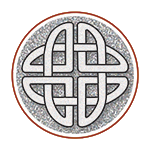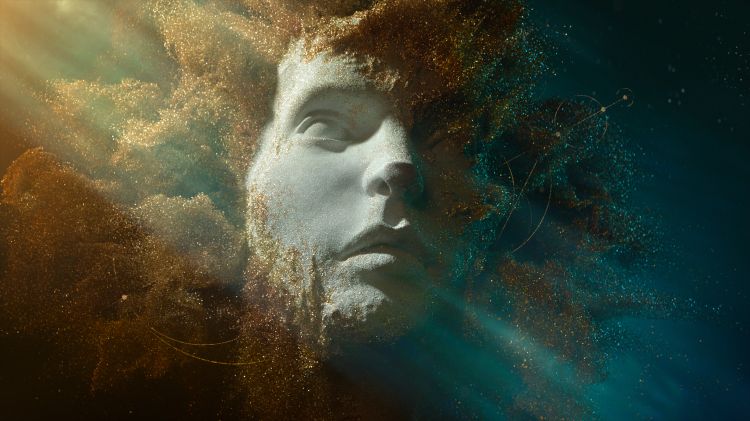In Part 1 of this series, I introduced you to the awe-inspiring title sequence from Apple TV’s sci-fi series, Foundation. Today, I’ll precisely define awe, outline its benefits and teach you how to generate Awe Experiences on demand.
“Awe is defined as the emotion we feel in response to something vast that defies our existing frame of reference…and leads us to change our perception of that frame of reference.”1 In other words, awe is an experience that grows you and your worldview. It forces us to stretch our mental models to make room for a new, broader universe of possibilities.
Awe is different from other emotions, such as admiration or surprise, in another way. It’s a positive emotion that tunes us into the world around us.
I’ve been inspired to write about the power of awe since falling head-over-heels in love with this brief video. If you haven’t watched it yet, DO IT! Seriously. My words will take on deeper meaning if you’re already steeped in awe (and you will be!). It will take less than two minutes and blow your mind.
You’ll have the best opportunity for awe if you set yourself up for success. That means:
- Watch with focused attention – as if you’re meditating. Turn off distractions. Attend to the details. Allow yourself to become absorbed.
- Watch in full resolution (a strong and speedy internet connection helps)
- Listen with the best audio device you have available (earbuds tend to be the most immersive option)
For me, this sensate experience generated a deeply pleasurable and joyful immersion in beauty. I was mystified by the artistic and technical expertise that allowed this piece of video magic to come into being. Curiosity, admiration, respect, and wonder were all ignited. It raised deep existential questions like “Where does one object end and the other begin?” as graphics fairy dust separated objects into atoms before my eyes. All that in 82 seconds!
Awe is the quickest, most accessible ‘happiness pill,’ so skillful use is an asset worth cultivating. Buckle up and prepare to expand your emotional toolkit.
Awe Promotes Lasting Change
Fleeting and rare, experiences of awe can change the course of a life in profound and permanent ways
– Jonathan Haidt
Everything that occurs, happens in a context. One aspect of that context is our state of mind – our consciousness – be it positive, negative, or somewhere in between. We have the power to prime our consciousness. If you’ve ever been caught in a depressing, anxious, or angry thought loop, you know you can poison your own frame of mind and it can lead to a downward spiral. We can just as easily prime our minds with a positive feeling tone, and experiencing awe is one way to enable this. This, in turn, can help heal old wounds, enhance current relationships, and increase health and well-being.
A defining characteristic of awe is that it makes us feel part of something greater than ourselves. Our typical focus on ourselves and own circumstances fades into oblivion. We don’t lose our self-esteem or self-worth – something that many emotions are particularly good at (e.g., shame, embarrassment). Rather, true Awe Experiences simply shrink our captivation with ourselves so we become a very small part of our own attention.
We are more likely to think of others after an Awe Experience, just as I feel compelled to share Foundation’s title sequence with everyone I know. Awe results in my own happiness plus the desire to share my rapture with others.
When given the opportunity to play itself out, awe generates a cascade of effects that result in a ‘virtuous cycle:’ good stuff leads to more good stuff.
Here’s the cascade of awe-effects: Awe pushes our typical self-focus aside, helping us touch the transcendent. As we come to feel part of a larger, connected, universe, feelings of connection, collaboration, and a sense of social belonging increase. This, in turn, enhances generosity, kindness, and humility. When these characteristics are central to our being, we become more desirable to social groups and communities. And belonging naturally increases our happiness. General well-being expands.
Even better, multiple Awe Experiences have a compounding impact. We’re not talking piddly, insignificant effects. A growing body of research2 shows that awe can play an essential role in our happiness, health, and relationships. This is true whether awe is a character trait (some lucky people hit the personality jackpot, in which awe is a common state of being) or a state we come to through deliberate practice.
Most people think of awe as something that we stumble upon unwittingly – a lucky confluence of time and place. But awe can also be a choice. We can create our own Awe Experience!
Benefits of Awe
And above all, watch with glittering eyes the whole world around you because the greatest secrets are always hidden in the most unlikely places. Those who don’t believe in magic will never find it.
— Roald Dahl
Given the challenges of day-to-day life, it’s vital to grow psychological resources that strengthen and sustain. Such resources include a sense of self-worth, the feeling of being cared about, trust in the ability to succeed at achieving goals, gratitude, and awe.
Few are born with a disposition to these qualities and many have childhood experiences that damage their ability to connect with and make use of these resources. As Roald Dahl suggests, if you’re not open to awe, you won’t find it. Thankfully, we can grow these qualities inside ourselves. And as we become more skilled at accessing these resources, they can, in turn, help us heal past loss, grief, and trauma and better grapple with challenges such as anxiety, chronic pain, health issues, or losses.
The field of awe research is still relatively young, but a variety of emotional, medical, and relational benefits have been identified, including improvements in all the following areas:
Awe also brings us into the sphere of transcendent experiences. In the same way that psychedelics appear to shut off the part of the brain known as the default mode network (the parts of the cortex that look at the world through an egocentric lens) so, too, does awe. In other words, awe is enabled when our ‘self’ shuts down, and we’re able to enter a realm that is larger than the self – a realm of infinite connection. Uplifting, to say the least.
Laying the Groundwork: Recognizing Awe
Learning to recognize signs of awe while it’s occurring spontaneously will help you practice deepening the experience. And by taking on the physical characteristics when you’re going about your day, you can increase the likelihood of self-generating an Awe Experience. It’s like holding a power position to help yourself feel strong, confident, and capable.
Some researchers believe that awe is a basic human emotion, meaning that it is seen in all cultures, manifested by recognizable facial expressions and physiological changes.
Readable awe characteristics include:
As I watched Foundation’s title sequence, chills ran up and down my spine, my eyes opened wide, and my heart rate quickened. I’ve also had fun witnessing many of these awe characteristics in others during Zoom viewings of the piece. Awe is obvious in others, and fun to observe.
These physiological signals can be used as a priming tool as well. Purposely engage in a handful of these expressions simultaneously while observing a sunset or a landscape and you might find awe descend upon you rapidly.
Generating Awe
There are many ways to bump into awe in your daily life. Finding awe in a title sequence was a happy accident for me. I run into awe with glee when it pops up in exhilarating conversations with smart, passionate people, when I notice a brilliantly constructed building, or read a passage of a book that leaves me speechless. These experiences are delightful, though random.
We can also deliberately cultivate these out-of-the-ordinary experiences. All that’s required is a little bit of time (often three minutes or less) and a simple algorithm. Consider this your personal process for microdosing well-being.
I practice awe during my morning routine and prior to every client call, combined with breathing exercises. I like to prime my consciousness so that it’s even easier to see how remarkable my clients are.
The recipe for cultivating awe from the ordinary (or deepening spontaneous awe) calls for an AHA!
- Attend: Bring your undivided attention to something you appreciate, value, or find inspiring.
- Hold: Remain focused on that thing for a bit, fully absorbing the experience.
- Amplify: Expand upon the sensations you’re experiencing.
- Take deep, long breaths.
- Notice and focus on details.
- Have an internal conversation about what you’re observing.
- Use the physiology of awe to deepen the experience. The act of smiling slightly (or grandly, if that feels natural), widening the eyes, dropping the jaw, and raising the eyebrows, signals the brain that awe is on.
But how does one find the raw material for an Awe Experience? Awe can arise from our senses (sight, sound, touch, smells, and tastes), including movement, from our thoughts, and from interacting with other people and animals.
Finding Awe in Nature
I’m the best version of myself in natural surroundings and my primary sense is visual, so images of natural beauty provide a quick dose. Man-made wonders also generate these feelings and the fact that beauty is then combined with talent and transcendent vision, super-charges the experience.
For several months early in the pandemic, I started each day with an awe practice and primarily used my own travel Instagram feed. My own remembrances and the beauty that other IGers conveyed, buoyed me through some hard times.
Now, I find awe on walks through the architectural glory that is Chicago, along Lake Michigan (the wide and wild lake-that-thinks-its-an-ocean), on YouTube (I’m into searching for ‘animal friends’ and watching how a donkey, for instance, protects a pack of sheep from dogs), or flipping open a coffee-table book like Annie Leibovitz’s Portraits.
It doesn’t take much for me. I practice awe when I look out my window and notice leaves changing color as seasons fade from fall to winter, admire a favorite painting on a wall, or touch a sponge that was a gift and is too pretty to waste on dishes. These are my staples.
I also get a charge from magazines that focus on art, science, and nature. Experiment for yourself with some stories that were awe generators for me:
- Scientific American’s story about underwater gorgeousness
- Scuba Diving’s ode to nature photographer, John Weller)
- WBEZ’s world tour of stunning architecture
You can also take an “Awe Walk.” This involves going somewhere that has the potential to evoke awe. Approach it with fresh eyes and an open attitude. In one study, simply gazing up at tall trees for two minutes was a powerful elicitor of awe. I had this precise experience a few weeks ago at the Berkeley Botanical Gardens:
You can also literally or figuratively bring your magnifying glass along on a local walkabout. Even familiar surroundings can reveal unexpected sources of awe if you’re paying close attention. Watch for anything that surprises or pleases you. When you find it, treat yourself to an AHA!
Here, I’ve primarily focused on one sense – vision. But the same process applies to all senses. A deep inhale in a musky forest can generate awe just as well as the visual imprint of a massive redwood. And if you have a strong imagination, a whiff of bottled fragrance (my favorite is Sweet Orange essential oil) can elicit associated memories and drop you into awe. That’s what aromatherapy is all about.
The more senses you engage simultaneously, the deeper your Awe Experience will be.
Finding Awe in Stories
Reading stories that convey a sense of vastness and possibility can increase our feelings of awe, slow our perception of time, and even boost our life satisfaction.
Awe-inspiring stories are often easy and accessible. The stories I linked to above are good examples. A story about someone coming to another’s aid can have the same impact. Or simply a beautifully written article. Consider this engrossing piece by my friend Arthur Plainview on finding connection within a conflictual relationship. Arthur’s love affair with language is awe-inducing; his words paint vivid images that I can see and feel.
I highlight sections in novels where the author’s descriptive skills amaze me. Then, I can enjoy that moment of awe, and return to it when I need a hit.
You can also write about awe. Your own memories can be a valuable resource. The practice of writing a detailed Awe Narrative has been shown to increase awe, reduce time pressure (time becomes more expansive), and increase generosity. Can you think of a time when you felt a strong sense of awe, perhaps in the presence of someone who wowed you with her exceptional intelligence, kindness, or courage? Writing essays about awe makes me giddy!
The same holds true for watching stories. Social media is addictive, in part, due to its plethora of awe-inspiring videos. We watch humans holding tiny animals in their hands and experience transcendence – the magnitude of the universe. We watch sports in amazement of the skill and beauty in the action. We watch artistic videos that sink us into our senses (see Koyaanisqatsi for long-form, immersive timelapse videos).
Finding Awe in Relationships
You can build awe into your relationships, and enhance their quality. This is accomplished through sincere good intentions. You build a bond by sincerely appreciating the other.
This is fairly easy to do when holding an infant. It’s more challenging in adult relationships. We humans are masters at noticing the ways others fail us. Observing and dwelling in the goodness of others – their kindness, humor, and generosity – can transform our experience, as well as theirs.
When working with clients who are couples or business partners, I often assign a practice that never fails to improve their relationship. Typically, each client is adept at catching their partner doing ‘it’ wrong (‘it’ being anything and everything that the person finds unsatisfying or offensive). This assignment asks them to, instead, spend the week catching their partner doing things ‘right.’ They are to watch for everything good, wonderful, special, caring, etc. that their partner does.
The results are always transformative. It’s a lovely experience to focus on what’s ‘right’ in the world rather than what’s ‘wrong’ and, by doing so, we counter our bias toward the negative.
The following week, I ask the couple to engage in the same exercise but add the AHA! The results are often stunning. Moments of intense appreciation and connection emerge from the most mundane observations. Sometimes all awe really requires is an open mind, a moment of presence, a desire to see the good available, and a willingness to linger in that experience.
Practicing Awe
Like any new habit, there are tricks to making this part of your routine. Many practical resources are available through this AWE study website.
Set up daily practice reminders (post-its, reminder apps, and gamifying apps like Streaks work well). Keep a brief diary of Awe Experiences to track what works best for you and when. You will experience the awe more deeply as you write about it.
Awe is an individual experience. Only you can know what inspires you and that knowledge only comes with practice. If an awe attempt doesn’t take, it’s simply a learning experience. As I always say, you win or your learn. But I guarantee that you will discover what moves you if you open yourself up to the possibilities and give this a go.
Lastly, hold this lightly. You don’t have to try hard. You barely have to try. Create the conditions. And remember that an experienced practitioner can feel awe in even the most mundane moments.
1 Jennifer Stellar, University of Toronto psychology professor
2 Here’s one uplifting example of awe research and its remarkable results.
Credits to NounProject.com artists for icon art (with gratitude):
- Stairway To Heaven by Luis Prado
- Body by Creative Mahira
- Self: Self Confident by KonKapp
- Belonging: Belonging by Ghozy Muhtarom
- Kindness/Generosity: Kindness by Iconbunny
- Desirable/attractive: Attractive by WEBTECHOPS LLP
- Happiness: Happy by lalawidi from NounProject.com





0 Comments